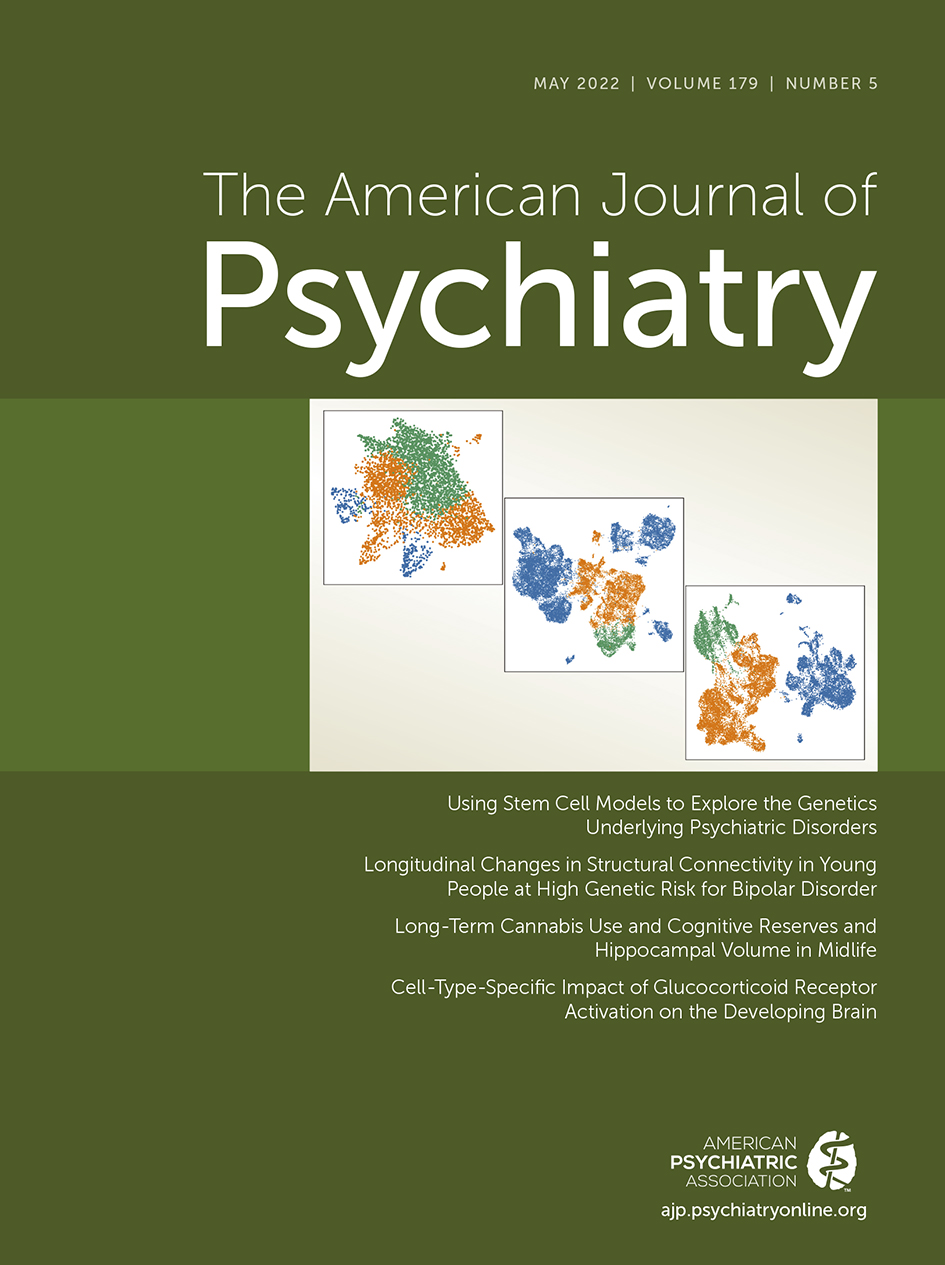Longitudinal Changes in Structural Connectivity in Young People at High Genetic Risk for Bipolar Disorder
Abstract
Objective:
Recent studies of patients with bipolar disorder or at high genetic risk reveal structural dysconnections among key brain networks supporting cognitive and affective processes. Understanding the longitudinal trajectories of these networks across the peak age range of bipolar disorder onset could inform mechanisms of illness onset or resilience.
Methods:
Longitudinal diffusion-weighted MRI and phenotypic data were acquired at baseline and after 2 years in 183 individuals ages 12–30 years in two cohorts: 97 unaffected individuals with a first-degree relative with bipolar disorder (the high-risk group) and 86 individuals with no family history of mental illness (the control group). Whole-brain structural networks were derived using tractography, and longitudinal changes in these networks were studied using network-based statistics and mixed linear models.
Results:
Both groups showed widespread longitudinal changes, comprising both increases and decreases in structural connectivity, consistent with a shared neurodevelopmental process. On top of these shared changes, high-risk participants showed weakening of connectivity in a network encompassing the left inferior and middle frontal areas, left striatal and thalamic structures, the left fusiform, and right parietal and occipital regions. Connections among these regions strengthened in the control group, whereas they weakened in the high-risk group, shifting toward a cohort with established bipolar disorder. There was marginal evidence for even greater network weakening in those who had their first manic or hypomanic episode before follow-up.
Conclusions:
Neurodevelopment from adolescence into early adulthood is associated with a substantial reorganization of structural brain networks. Differences in these maturational processes occur in a multisystem network in individuals at high genetic risk of bipolar disorder. This may represent a novel candidate to understand resilience and predict conversion to bipolar disorder.



